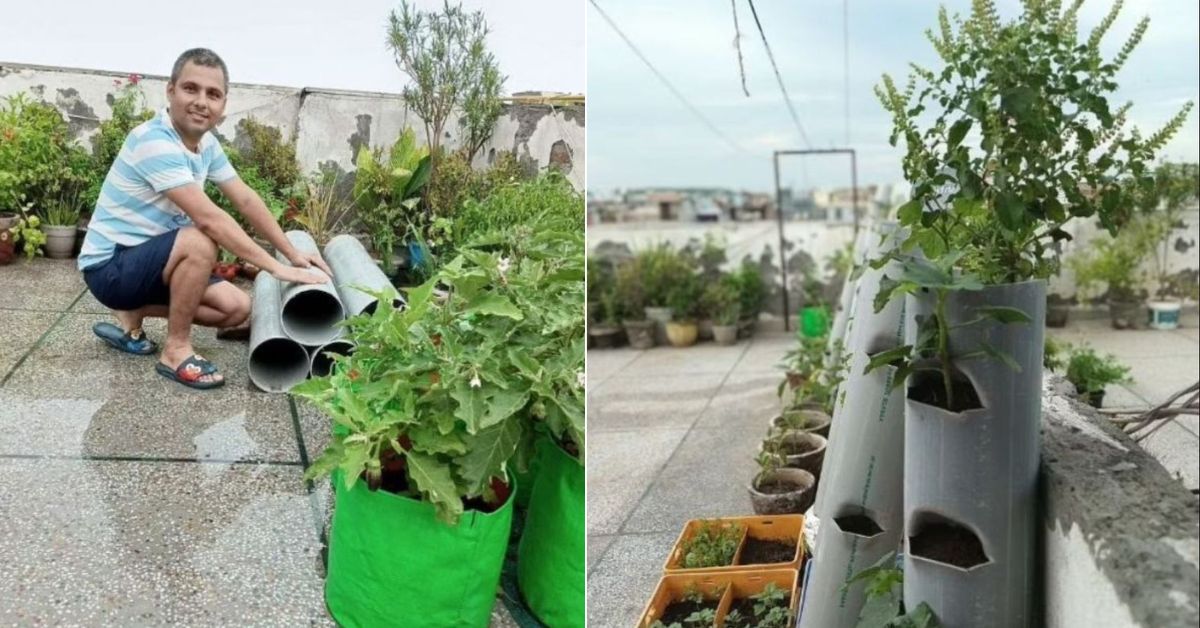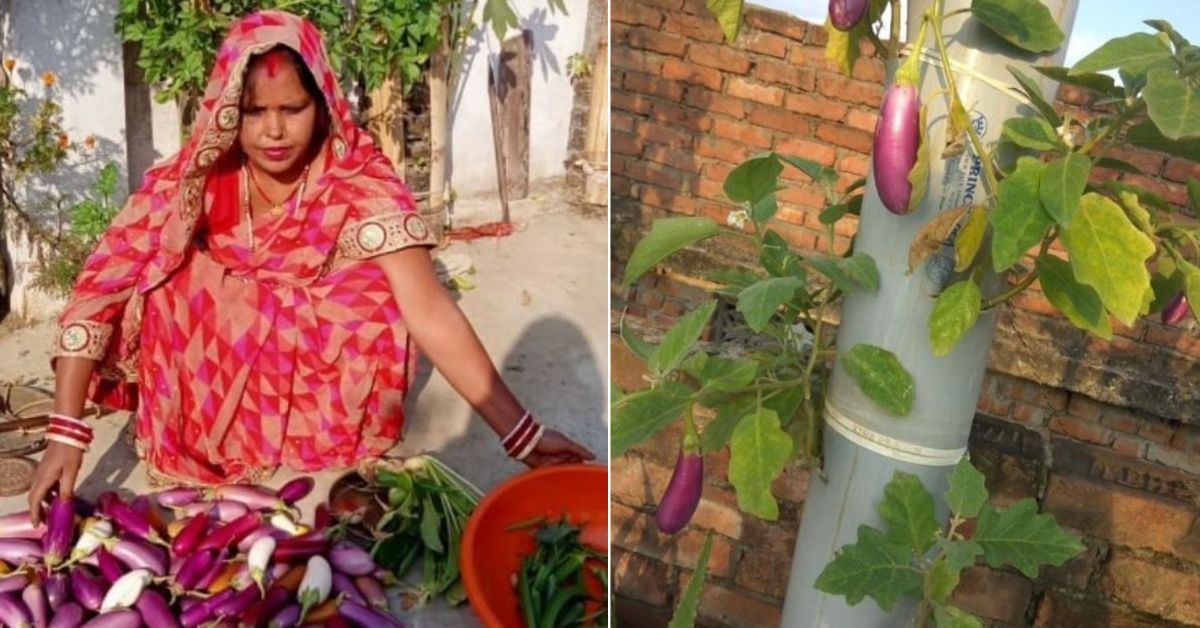How to Grow a Vertical Vegetable Garden Using PVC Pipes On Your Terrace & Balcony?
Gardeners Mithilesh Kumar Singh and Sunita Prasad show how to grow vegetables even in small spaces. Here's how they innovate using PVC pipes to grow mini-gardens at home.

Often those living in metropolitan cities hesitate to garden at home because of lack of space. However, Mithilesh Kumar Singh from Uttar Pradesh, and Sunita Prasad from Bihar, have defied this notion, especially in the urban areas.
While Mithilesh has successfully cultivated a variety of crops including chilli, coriander, tomato, brinjal, okra, peas, and bitter gourd in his compact garden, Sunita has also found similar success in her home garden.
Their secret? Vertical gardening using PVC pipes.
Sunita has installed PVC pipes to create a vertical garden where she grows around 5 kg of vegetables every week.
Meanwhile, Mithilesh says that using PVC pipes saves space as well as money. “In general, PVC pipes are cheap, easy to find, and can save up a lot of space. Moreover, it does not require a complicated set up,” he adds.

The ingenious gardeners share gardening tips for creating a vertical garden using PVC pipes.
1.Take a five-foot pipe and cut it into sections according to the number of saplings or seeds you have.
2. Avoid drilling an excessive number of holes in the pipe. Maintain a distance of 18 inches between holes on one side and a gap of nine inches on the opposite side of the pipe. In total, there should be five evenly spaced holes along a six-foot pipe.
3. Close the extra holes, if any, using a hot air gun. Do not forget to tape the extra holes to prevent water leakage.
4. Fill three-fourth part of the pipe with soil and plant the seed or sapling.
5. Add a mixture of vermicompost or any other organic fertiliser to the soil.
6. Create a hole in the centre of the soil and fill it with sand.
7. Water the sand so that it stays wet and the moisture reaches the bottom easily.
8. There is no need to change the soil for the next three years.
9. New saplings or seeds can be planted by simply making a hole in the soil.
10. Neem water can be used to avoid pests.
Gardening in two five-foot PVC pipes typically costs around Rs 1,000. With this setup, you can cultivate four to five varieties of vegetables, ranging from leafy greens to tubers.
Happy gardening!
Edited by Khushi Arora
If you found our stories insightful, informative, or even just enjoyable, we invite you to consider making a voluntary payment to support the work we do at The Better India. Your contribution helps us continue producing quality content that educates, inspires, and drives positive change.
Choose one of the payment options below for your contribution-
By paying for the stories you value, you directly contribute to sustaining our efforts focused on making a difference in the world. Together, let's ensure that impactful stories continue to be told and shared, enriching lives and communities alike.
Thank you for your support. Here are some frequently asked questions you might find helpful to know why you are contributing?












